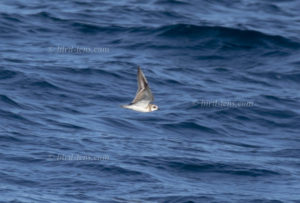 Seawatching along the arctic coasts of north-west Alaska – with Siberia on the horizon – was the thrill at the end of May till the first days of June 2016. Along the edges pf St. Lawrence Island seabirds are living and migrating not only in the Nearctic region but also to the Palearctic.
Seawatching along the arctic coasts of north-west Alaska – with Siberia on the horizon – was the thrill at the end of May till the first days of June 2016. Along the edges pf St. Lawrence Island seabirds are living and migrating not only in the Nearctic region but also to the Palearctic.
Migration was on its peak when we arrived with a tour of the operator High Lonesome – a group for mainly US-birders. Migration kept going for the whole time (during a 6-day trip) with some changes in mixture of species.
Whereas Eiders as Common Eider (Somateria mollissima), King Eider (Somateria spectabilis) and Steller’s Eider (Polysticta stelleri) and Long-tailed Ducks (Clangula hyemalis) were abundant mainly in the first days, other seaducks like White-winged Scoter (Melanitta deglandi) of both subspecies – Stejneger´s Scoter (Melanitta deglandi stejnegeri) and White-winged Scoter (Melanitta deglandi deglandi) or divers like Red-throated Loon (Gavia stellata), Pacific Loon (Gavia pacifica) and Yellow-billed Loon (Gavia adamsii) showed up later. Red-breasted Merganser (Mergus serrator) could be seen daily. Unfortunately only Spectacled Eider (Somateria fischeri) we missed – probably these birds, which migrate normally quite early, had been moved already to the northern breeding grounds. Auks as Common Murre (Uria aalge), Thick-billed Murre (Uria lomvia) and especially Crested Auklet (Aethia cristatella) were abundant all the time.
During seawatchting seabirds there were always the one or the other wader, which passed by – mainly alone but often quite close to the coast – were Rufous-necked Stint (Calidris ruficollis), Long-billed Dowitcher (Limnodromus scolopaceus), Common Ringed Plover (Charadrius hiaticula) and even a Yellow Wagtail (Motacilla flava).
The kick of the waders was a lonesome Mongolian Plover (Charadrius mongolus) which passed by unnoticed but the photographer. Only during the sorting of the images, the ID could be recognized and later confirmed. Gambell, a small village on the north-western tip of the remote St. Lawrence Island is an outstanding outpost not only for North American Birders. A short trip with only a few days with High Lonesome yielded all sorts of good birds, both Asian and North American origin.
During a 6-day trip guided by was amazed by the impressive but regular bird migration along the shore of the island to the Bering Sea further north. An almost as important feature was the possibility to catch-up with maybe the best vagrants sightings of the spring 2016.
Anyway, there had been some very good Asian species this spring with a lot more of waders on Gambell what you will find in the gallery. Far outstanding was the Pintail Snipe (Gallinago stenura), which was flushed at close distance in the so-called Far Boneyard, flew low and a very short distance on first flush and then flew farther and higher on second flush, always from dry ground, although bird flew high it circled back around, we were not able to flush it a third time the bird called once, not particularly sharp like Common/Wilson’s but also not particularly wheezy (fairly short and quiet call). This birds was finally only identified by checking the images shot and discussing sighting and sound impressions in the group. First reviews from experts for ID-confirmations turned out to be positive.
Additional nice sightings of Asian origin in the last few days of May and the first few days in June could be made of 1 Terek Sandpiper (Xenus cinereus), one Common Greenshank (Tringa nebularia), several Rufous-necked Stint (Calidris ruficollis), several Common Ringed Plover (Charadrius hiaticula), and one Eyebrowed Thrush (Turdus obscurus).
During the previous trip, one of the good birds farther to the south at the Pribilofs, was a Mongolian Plover (Charadrius mongolus), too.
To cope with the growing demand for top shots of the rarer species of the Palearctic Bird-Lens is keen to enrich the range of pictures of birds you can find in the western palearctic. Beside the image above you can find a nice selection of birds in the gallery or in the “Pictures Shop” very soon. Just give a message, if Bird-Lens could serve you with an image needed before the new pictures are online.